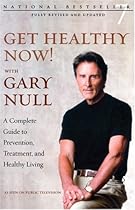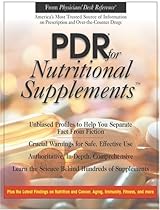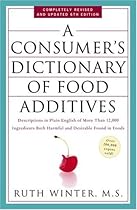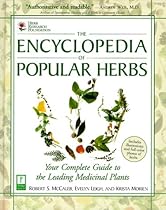Textbook of Natural Medicine 2nd Edition Volume 2Michael T. Murray, ND
See book keywords and concepts |
| Constitutional acupuncture
Dosage: see Treating AIDS with chinese medicine (Shattuck & Ryan166) for a comprehensive discussion of TCM in the treatment of HIV/AIDS.
Research review:
• Diu167 explores the possibility of treating AIDS by acupuncture.
• In a 12 week randomized, double-blind, placebo-controlled clinical trial, 30 adults with symptomatic HIV infection with CD4+ counts of 200-499 received a combination of 31 Chinese herbs or placebo. Outcome measures included quality of life, symptoms, weight and CD4+ count. |
Gary Null
See book keywords and concepts |
 These are popular in chinese medicine, and can be obtained by prescription from an herbalist.
Corn silk tea. This helps to get rid of the bloating that comes from too many hormones stored in the blood. Women's Rhythm also eliminates bloating. This formula can be found in certain health food stores or ordered from Kahn Herbs.
Xiao Yao Wan. This wonderful remedy, which can be purchased at pharmacies in Chinatowns in major cities, helps digestive processes. Not only does this formula relieve painful periods, it also alleviates anger.
Green tea. These are popular in chinese medicine, and can be obtained by prescription from an herbalist.
Corn silk tea. This helps to get rid of the bloating that comes from too many hormones stored in the blood. Women's Rhythm also eliminates bloating. This formula can be found in certain health food stores or ordered from Kahn Herbs.
Xiao Yao Wan. This wonderful remedy, which can be purchased at pharmacies in Chinatowns in major cities, helps digestive processes. Not only does this formula relieve painful periods, it also alleviates anger.
Green tea. |
Rebecca Wood
See book keywords and concepts |
 Bob Flaws and Honora Wolfe, two Western authorities on chinese medicine, in their book, Prince Wen Hui's Cook: Chinese Dietary Therapy, report that these same properties are medicinal in cases of sexually transmitted diseases, ovarian cysts, uterine tumors, and menstrual irregularities (including painful or suppressed menstruation). In moderation, eggplant reduces kapha.
Eggplants are mostly water, 90 percent, and therefore low in calories and other minerals, potassium excepted. Bob Flaws and Honora Wolfe, two Western authorities on chinese medicine, in their book, Prince Wen Hui's Cook: Chinese Dietary Therapy, report that these same properties are medicinal in cases of sexually transmitted diseases, ovarian cysts, uterine tumors, and menstrual irregularities (including painful or suppressed menstruation). In moderation, eggplant reduces kapha.
Eggplants are mostly water, 90 percent, and therefore low in calories and other minerals, potassium excepted. |
| An interesting difference between Ayurvedic and chinese medicine arises from the fact that India is predominately a subtropical region and China is predominately a temperate region. Because of this dramatic climactic difference, Ayurvedic cuisine uses more sweat-inducing spices and is overall a more cooling and cleansing diet.
The Five Elements in Ayurveda correspond closely to the old European system of the humors. They are earth, water, fire, air, and ether. People are a combination of these elements and can be described as one of three doshas, or types, which are vata, pitta, and kapha. |
Sheldon Saul Hendler and David Rorvik
See book keywords and concepts |
 Huperzine A is also known as HUP, hup A and selagine. In chinese medicine, the extract of Huperzia serrata is known as Chien Tseng Ta and shuangyiping. Huperzine A derivatives are being developed for pharmaceutical application.
ACTIONS AND PHARMACOLOGY
ACTIONS
Huperzine A may have cognition-enhancing activity in some.
MECHANISM OF ACTION
Alzheimer's disease is a neurodegenerative disorder associated with neuritic plaques that affect the cerebral cortex, amygdala and hippocampus. There is also neurotransmission damage in the brain. Huperzine A is also known as HUP, hup A and selagine. In chinese medicine, the extract of Huperzia serrata is known as Chien Tseng Ta and shuangyiping. Huperzine A derivatives are being developed for pharmaceutical application.
ACTIONS AND PHARMACOLOGY
ACTIONS
Huperzine A may have cognition-enhancing activity in some.
MECHANISM OF ACTION
Alzheimer's disease is a neurodegenerative disorder associated with neuritic plaques that affect the cerebral cortex, amygdala and hippocampus. There is also neurotransmission damage in the brain. |
Earl L. Mindell, R.Ph., Ph.D.
See book keywords and concepts |
 Panax Ginseng and Ashwagandha
Ginseng is used to remedy all sorts of ailments in chinese medicine. Try 150 milligrams of standardized extract three times a day to relieve anxiety. Ashwagandha is an Ayurvedic herbal medicine; try 500 milligrams three times a day.
Calcium and Magnesium
Sometimes insomnia or anxiety can be caused by "universal" muscle tension, where it feels as if every muscle in your body is tense. People with this type of tension tend to get muscle cramps at night. Panax Ginseng and Ashwagandha
Ginseng is used to remedy all sorts of ailments in chinese medicine. Try 150 milligrams of standardized extract three times a day to relieve anxiety. Ashwagandha is an Ayurvedic herbal medicine; try 500 milligrams three times a day.
Calcium and Magnesium
Sometimes insomnia or anxiety can be caused by "universal" muscle tension, where it feels as if every muscle in your body is tense. People with this type of tension tend to get muscle cramps at night. |
Elson M. Haas, M.D.
See book keywords and concepts |
 This is discussed in other sections of this book, such as in Chapter 9 on Diets and the General Detoxification program earlier in this chapter, and emphasized in my first book, Staying Healthy With the Seasons.) In chinese medicine, the transition time between the seasons is considered to be about ten days before and after the equinox or solstice. For spring, this period is about March 10 through April 1; for autumn, it is from about September 11 through October 2. This is discussed in other sections of this book, such as in Chapter 9 on Diets and the General Detoxification program earlier in this chapter, and emphasized in my first book, Staying Healthy With the Seasons.) In chinese medicine, the transition time between the seasons is considered to be about ten days before and after the equinox or solstice. For spring, this period is about March 10 through April 1; for autumn, it is from about September 11 through October 2. |
| Schools of natural healing or chinese medicine may view these allergy problems in terms of body biochemical or energy imbalances and attempt to offer relief by correcting these difficulties. Nutritional medicine may have a lot to offer the allergic person by providing the optimum tissue and cellular nutrient levels that allow improved function and reduced allergic symptoms.
A deeper realm of allergy and immunology has fascinated many physicians in the last two decades. This is now incorporated into the field of clinical ecology. |
| By looking at the skin, tongue surface, eye tissue, and hair quality, I can get a good idea of an individual's general health, vitality, and internal balance. In chinese medicine, the skin coloration or hue around and under the eyes reflects the subtle balance among the Chinese five elements. For example, a greenish hue may suggest a liver/gallbladder imbalance. In this system, the colors are related to different organs as shown in the following chart. |
| As the skin is an eliminating organ, the general skin health may tie into functions of the lungs, colon, kidneys, and liver. In chinese medicine, many skin problems are treated by stfengthening the function of these organs.
To keep our skin healthy, it is most important to take good overall care of ourselves, as the skin's well-being is dependent on the health of the rest of our body. Drinking adequate amounts of water may be the single most important factor in healthy skin and good eliminative functions. |
Textbook of Natural Medicine 2nd Edition Volume 1Michael T. Murray, ND
See book keywords and concepts |
| It is best to do treatments before meals, or at least 1 hour after a meal. From chinese medicine, we learn the relationships between disease and time of day. For those who have this knowledge, it is well to use it when deciding at what time to do hydrotherapy treatments.
As with any therapy, it is important to practice hydrotherapy with a research orientation, noting unusual reactions and physiological effects. |
| Although chinese medicine and pharmacy began to spread outside of China's borders nearly 2,000 years ago, it is only in the last 20 years that interest has grown in North America. Much of this is due to former President Nixon's trip to the People's Republic of China in the early 1970s and subsequent reporters' visits and articles, especially those of James Reston of the New York Times.
The growth of acupuncture and oriental medical practices such as herbal medicine in the United States has been steady since that time. |
| Immunopharmacology of chinese medicine. I. Ginseng induced immunosuppression in virus infected mice. Am J Chin Med 1982; 10: 44-54
50. Oh JS, Lim JK, Park CW, Han MH. The effect of ginseng on experimental hypertension. Korean J Pharmacol 1968; 4: 27-31
51. Siegel RK. Ginseng and high blood pressure (letter). JAMA 1980; 243: 32
52. Yamamoto M, Uemura T, Nakama S et al. Serum HDL-cholesterol-increasing and fatty liver-improving action of Panax ginseng in high cholesterol diet-fed rats with clinical effect on hyperlipidemia in man. Am J Chin Med 1983; 11: 96-101
53. Yamamoto M, Kumagai. |
Ruth Winter
See book keywords and concepts |
 Ephedra has been used for more than five thousand years in chinese medicine and has become more and more popular in Western medicine. It acts like epinephrine (see) and is used as a bronchodilator, nasal decongestant, to raise blood pressure, and topically to constrict blood vessels. See also Ephedra. EPICHLOROHYDRIN • A colorless liquid with an odor resembling chloroform. It is soluble in water but mixes readily with alcohol and ether. A modifier for food starches that the FDA permits to be used up to level of 0.3 percent in starch. Ephedra has been used for more than five thousand years in chinese medicine and has become more and more popular in Western medicine. It acts like epinephrine (see) and is used as a bronchodilator, nasal decongestant, to raise blood pressure, and topically to constrict blood vessels. See also Ephedra. EPICHLOROHYDRIN • A colorless liquid with an odor resembling chloroform. It is soluble in water but mixes readily with alcohol and ether. A modifier for food starches that the FDA permits to be used up to level of 0.3 percent in starch. |
Textbook of Natural Medicine 2nd Edition Volume 1Michael T. Murray, ND
See book keywords and concepts |
| Probably the most important text in the history of chinese medicine, often "overshadowed" by the "reputation and authority of the original classic", the Huangdi Nei Jing, was the Nan Jing (The Classic of Difficult Issues), thought to have been compiled around the first or second century AD. According to Unschuld,7 the Nan Jing was "a significant and innovative work that was the apex and conclusion of the developmental phase of the conceptual system unknown as the medicine of systematic correspondence". |
Ruth Winter
See book keywords and concepts |
 The root is used in chinese medicine as a tonic. In India, it is used as a hormonal tonic for women to promote fertility, relieve menstrual pains, increase breast milk, and generally nourish and strengthen the female reproductive system. It is also used as a tonic for the lungs in consumptive diseases and for AIDS wasting. Asparagus contains glycosides, asparagine, sucrose, starch, and mucilage. In 1992, the FDA proposed a ban on asparagus in oral menstrual drug products because it has not been shown to be safe and effective for its stated claims. The root is used in chinese medicine as a tonic. In India, it is used as a hormonal tonic for women to promote fertility, relieve menstrual pains, increase breast milk, and generally nourish and strengthen the female reproductive system. It is also used as a tonic for the lungs in consumptive diseases and for AIDS wasting. Asparagus contains glycosides, asparagine, sucrose, starch, and mucilage. In 1992, the FDA proposed a ban on asparagus in oral menstrual drug products because it has not been shown to be safe and effective for its stated claims. |
Textbook of Natural Medicine 2nd Edition Volume 2Michael T. Murray, ND
See book keywords and concepts |
| Zizyphi fructus
The jujube plum has been used extensively in chinese medicine for the treatment of asthma and allergic rhinitis.66 It contains 100-500 nmol/g of dry weight, a concentration 10 times greater than that of any other plant or animal tissue thus far reported in the literature.67 It also contains a beta-adrenergic receptor stimulator which also raises cAMP levels. These experimental findings, in conjunction with zizyphi's long historical use, strongly support its clinical use. |
| Treating AIDS with chinese medicine. Berkley: Pacific View Press. 1994
167. Dui J. Exploration of treating AIDS by acupuncture. Chen Tzu Yen Chiu 1990; 15: 250-251
168. Burack JH, Cohen MR, Hahn JA et al. Pilot randomized controlled clinical trial of Chinese herbal treatment for HIV-associated symptoms. J AIDS Hum Retrovitrl 1996; 12: 386-393
169. Moffett H et al. Using acupuncture and herbs for the treatment of HIV infection. AIDS Patient Care 1994; 8
170. Goh M. Acupuncture treatment for neuropathy - patients with HIV infection. International Symposium on Viral Hepatitis and AIDS April. |
| Mishra, an Indian homeopathic physician and recent WHO Research Fellow at the Bastyr University AIDS Research Center, observed HIV+ patients receiving care at the Bastyr University HIV/AIDS Integrated Care Clinic, an outpatient clinic which provides integrated naturopathic medicine, chinese medicine, and nutrition. After 10 weeks of observation, he arrived at the following conclusions regarding effective homeopathic prescribing. |
National Women's Health Network
See book keywords and concepts |
 In chinese medicine, Panax ginseng and Panax quin-quefolius are not interchangeable and are prescribed for different conditions. Ginseng should not be combined with other stimulants and can interact with warfarin and the antidepressant phenelzine.32
The usual dose for long-term use is 0.4 to 0.8 grams of the root daily.
Kava {Piper methysticum)
Kava, a psychoactive member of the pepper family, is taken for anxiety and insomnia in both Europe and the
United States. It appears to be a safe herb for short-term relief. In chinese medicine, Panax ginseng and Panax quin-quefolius are not interchangeable and are prescribed for different conditions. Ginseng should not be combined with other stimulants and can interact with warfarin and the antidepressant phenelzine.32
The usual dose for long-term use is 0.4 to 0.8 grams of the root daily.
Kava {Piper methysticum)
Kava, a psychoactive member of the pepper family, is taken for anxiety and insomnia in both Europe and the
United States. It appears to be a safe herb for short-term relief. |
| Ginseng (Panax ginseng or Panax quinquefolius)
Ginseng is regarded as a tonic or adaptogenic herb in chinese medicine, which means that it is believed to have the ability to rebalance body chemistry until it more nearly approaches a normal healthy state. Ginseng contains terpenoids, especially a group called ginsenosides.
A standardized ginseng extract was tested in 384 menopausal women in a four-month, randomized, double-blind, placebo-controlled trial. |
| In chinese medicine, licorice is always used with other ingredients, and the synergistic effects of mixtures as well as dose limitations may prevent problems. All reported cases of licorice-induced problems have been linked to candies, gum, laxatives, or chewing tobacco, not from the use of licorice as herbal medicine. (Most "licorice" candies manufactured in the United States are actually flavored with anise; imported candies usually contain real licorice.)38
Because licorice can lower potassium levels, it should not be combined with diuretics. |
| A icorice is not d benign Lherb, dnd we do not recommend its use to tredt menopdusal symptoms unless it is pdrtofd mixture prescribed by a traditiondl practitioner of chinese medicine. crossover trial of a standardized product called Promensil (containing 40 mg total isoflavones, including 4 mg of genistein, 3.5 mg of daidzein, 24.5 mg of biochanin, and 8.0 mg of formononetin)40 enrolled fifty-one women whose last menses was at least six months past and who were having at least three hot flashes a day. They were randomized to one daily tablet of placebo or Promensil. |
| Licorice is not a benign herb, and we do not recommend its use to treat menopausal symptoms unless it is part of a mixture prescribed by a traditional practitioner of chinese medicine.
The usual dose is 1 to 4 grams of the root in an infusion (made like tea but steeped for twenty to thirty minutes) or 0.6 to 2.0 grams of licorice extract daily.
Red CI over (Trifolium prdtense)
Red clover contains the phytoestrogens formononetin, biochanin A, daidzein, and genistein. |
James A. Duke, Ph.D.
See book keywords and concepts |
 In an article titled "Studies on Herbal Aphrodisiacs Used in the Arab System of Medicine" published in the American Journal of chinese medicine, some Saudi scientists asserted that ginger extracts significantly increase sperm motility and quantity.
Ginger, a botanically close relative of cardamom, certainly has a piquant taste, and maybe it stirs enough sexual interest to help a flagging erection. I make no promises, but I have great respect for folk medical traditions, which is why I include both ginger and cardamom in my Erector Set Tea.
Ginseng (Panax, various species). In an article titled "Studies on Herbal Aphrodisiacs Used in the Arab System of Medicine" published in the American Journal of chinese medicine, some Saudi scientists asserted that ginger extracts significantly increase sperm motility and quantity.
Ginger, a botanically close relative of cardamom, certainly has a piquant taste, and maybe it stirs enough sexual interest to help a flagging erection. I make no promises, but I have great respect for folk medical traditions, which is why I include both ginger and cardamom in my Erector Set Tea.
Ginseng (Panax, various species). |
| Widely used in chinese medicine as a male tonic, this herb also has strong liver-protecting properties, according to pharmacognosist (natural product
Milk Thistle
You can grow milk thistle in your home garden or purchase it in capsule form at health food stores. pharmacist) Albert Leung, Ph.D. Chinese doctors use its extracts effectively to treat viral hepatitis and other liver ailments. The seeds contain more than a dozen liver-protective compounds.
I really wouldn't be surprised if one day schisandra is right up there with milk thistle as a top herb for liver complaints. |
Earl Mindell, R.Ph., Ph.D.
See book keywords and concepts |
 Astragalus—This herb has long been utilized in chinese medicine. Recent studies have shown that astragalus may induce interferon production (our disease-fighting cells) kill viruses, and destroy cancer cells.
Goldenseal—This Native American plant was widely used by healers for sore eyes and skin diseases. Recent research has corroborated its antibacterial properties. (Goldenseal should not be used for more than two weeks at a time since, overexposure will lessen its effect on the body. This herb should not be used during pregnancy. Astragalus—This herb has long been utilized in chinese medicine. Recent studies have shown that astragalus may induce interferon production (our disease-fighting cells) kill viruses, and destroy cancer cells.
Goldenseal—This Native American plant was widely used by healers for sore eyes and skin diseases. Recent research has corroborated its antibacterial properties. (Goldenseal should not be used for more than two weeks at a time since, overexposure will lessen its effect on the body. This herb should not be used during pregnancy. |
Robert S. McCaleb, Evelyn Leigh, and Krista Morien
See book keywords and concepts |
 Dosage
In chinese medicine, typical doses of astragalus tend to be fairly large (between 8 and 15 grams per day). Astragalus can be used in tincture or capsule form. In China, root slices that look somewhat like tongue depressors are also cooked in foods such as soups and rice, or simmered in boiling water for several hours as tea.
* Capsules: 400 to 500 mg, eight or nine times a day 13
• Tincture (1:5): 15 to 30 drops, two times a day 13
References
1. Chang HM, But PPH. Pharmacology and Applications of Chinese Materia Medica. Vol. 2. Hong Kong: World Scientific, 1987.
2. Dosage
In chinese medicine, typical doses of astragalus tend to be fairly large (between 8 and 15 grams per day). Astragalus can be used in tincture or capsule form. In China, root slices that look somewhat like tongue depressors are also cooked in foods such as soups and rice, or simmered in boiling water for several hours as tea.
* Capsules: 400 to 500 mg, eight or nine times a day 13
• Tincture (1:5): 15 to 30 drops, two times a day 13
References
1. Chang HM, But PPH. Pharmacology and Applications of Chinese Materia Medica. Vol. 2. Hong Kong: World Scientific, 1987.
2. |
Textbook of Natural Medicine 2nd Edition Volume 1Michael T. Murray, ND
See book keywords and concepts |
| Another of the famous ancient masters of chinese medicine was Hua Tuo (?-208 AD), a surgeon and practitioner of an eclectic range of therapies including acupuncture and hydrotherapy, and originator of the therapeutice exercises called the "five animals".4
Huangfu Mi (214-282 AD), a famous acupuncturist, compiled Zhen Jiu Jia Yi Jing (A Classic of Acupuncture and Moxibustion), first monograph on acupuncture in history, around 282 AD. These 12 volumes covered all aspects of acupuncture practice and theory and are considered a monumental work. |
Rudolph M. Ballentine, M.D.
See book keywords and concepts |
 She saw her mother as cruel, and had been dealing in therapy with memories of abuse by her. In chinese medicine, the kidneys relate to fear. Carlene's focus on that part of her body at this moment might be seen as recoiling in fear from her mother, stepping "backward into her kidneys" to protect herself.
But the fedney problem brings up in my mind the issue of poisoning. When kidneys fail, filtration falls off and poisons build up in the blood; you become poisoned by negativity that you can't acknowledge and release.
"Why don't you tafe Black Cohosh flower essence?" I suggested. She saw her mother as cruel, and had been dealing in therapy with memories of abuse by her. In chinese medicine, the kidneys relate to fear. Carlene's focus on that part of her body at this moment might be seen as recoiling in fear from her mother, stepping "backward into her kidneys" to protect herself.
But the fedney problem brings up in my mind the issue of poisoning. When kidneys fail, filtration falls off and poisons build up in the blood; you become poisoned by negativity that you can't acknowledge and release.
"Why don't you tafe Black Cohosh flower essence?" I suggested. |












